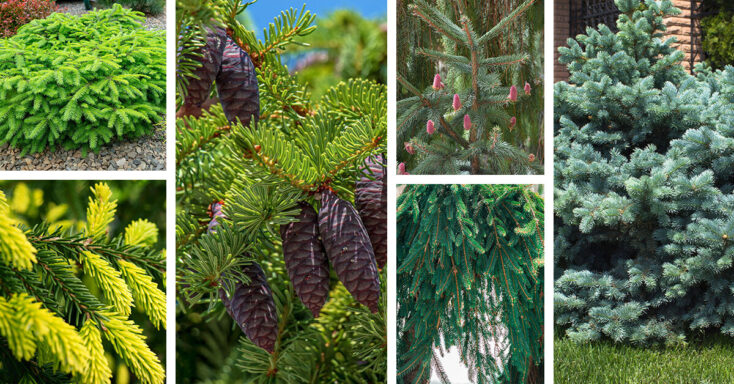Gorgeous in almost any landscape, there are many types of spruce trees perfect for planting in your garden. Spruce trees are evergreen trees or shrubs that have square, four-sided needles. They are different from juniper or cedar that have scale-like needles. While spruce trees are related to pine trees and fir trees, pine needles are usually longer and come in bunches of 2 to 5 and fir needles are usually flat and softer than spruce tree needles.
Because of their beauty and natural Christmas-tree shape, countless types of spruce trees have been cultivated to grow in interesting shapes such as dwarf, weeping, and globe forms. Some types of spruce trees have white, blue, yellow, or green needles, to make them even more interesting in the landscape.
Key Takeaways
- There are 35 species of spruce trees found around the world.
- spruce trees are evergreens that grow in the northern hemisphere and many types of spruce trees tolerate colder climates.
- Identify spruce trees by their square, four-sided needles.
- Many types of spruce trees have interesting cones that are often brightly colored when young.
- There are types of spruce trees that grow in interesting shapes such as dwarf, weeping, and globe forms.
Frequently Asked Questions About Types of Spruce Trees
What is the most common spruce tree?
The most common type of spruce tree for planting in the landscape is most likely the Colorado Blue Spruce. The magnificent blue-green coloring, quintessential Christmas tree form, and magnitude of usefulness makes Colorado Blue Spruce one of the most popular ornamental conifers. It is also a great tree to plant for wildlife and birds. In addition, it provides privacy, shade, and wind protection.
Is spruce a pine?
Pine is of the genus Pinus and Spruce is of the genus Picea. Both are from the plant family Pinaceae. So, well, kind of. Both are conifers, as in they make cones. Both are evergreen, meaning their foliage stays green year-round. But pines bear their needles in clusters of 2 to 5 and spruce trees have singular needles attached directly to branches. Spruce needles are square and four-sided. They roll easily at your fingertips.
What is the difference between Serbian and Norway spruce?
Both these beautiful Spruce Trees are of European origin. One from Norway and northern Europe, one from Serbia. Both can reach 60 feet tall. Norway Spruce is hardier, tolerating USDA zones 2 to 7, where Serbian Spruce grows in USDA zones 4 to 7. Serbian Spruce is a better choice for urban areas because it tolerates pollution and hot humid weather better than Norway Spruce.
Is it conifer or spruce?
All types of Spruce Trees are conifers but not all conifers are Spruce Trees. Conifers are cone-bearing seed plants. This includes cedar, juniper, pine, fir, yew, redwood, larch, and hemlock, among others.
Is pine better than spruce?
There are fantastic reasons to plant both gorgeous pines and spruce. Both are loved by wildlife. Both are evergreen which accompany every style of plant beautifully. Both provide winter interest. Pines generally have longer needles borne in clusters which can be very pretty. Spruce Trees often have denser branching and hold a classic Christmas tree shape. If you have room, try both and see which you like better.
14 Outstanding Types Of Spruce Trees For Year-Round Interest
1. Norway spruce (Picea abies)
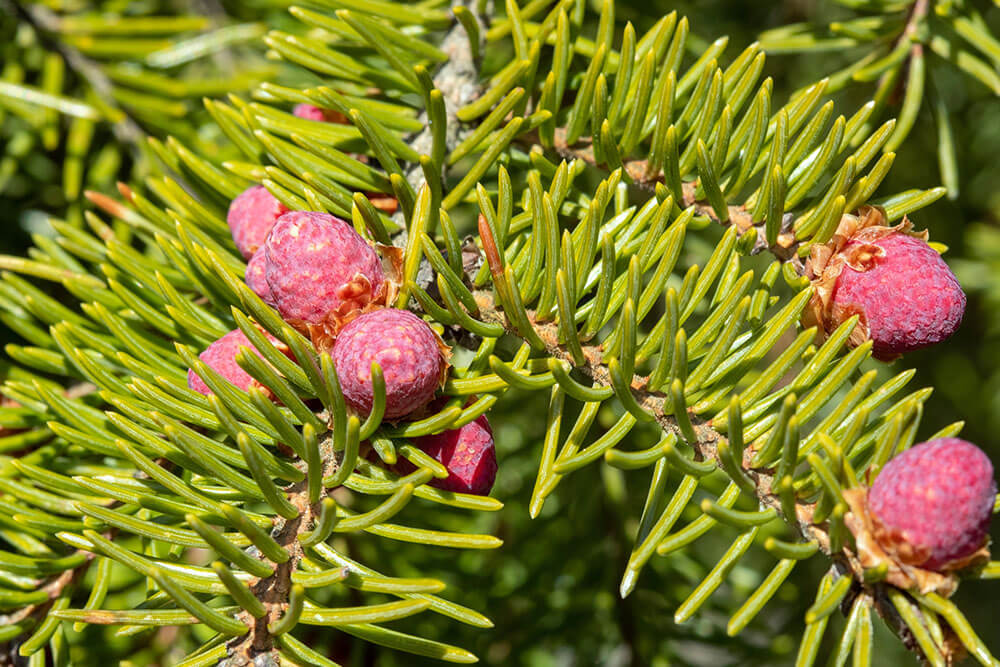
Tiered branches in elegant symmetry have made Norway Spruce (Picea abies) a favorite for Christmas Trees and that are an excellent large evergreen for gardens and parks. With over 150 cultivars, Norway Spruce’s graceful growing habit can be found in many outstanding landscape specimens. Norway Spruce needs well-draining soil and staying too wet can be hard on this large tree that grows 40 to 60 feet tall. It also loves full sun locations in USDA hardiness zones 2 to 7. Native to northern Europe, the beautiful cones hang down and are 4 to 6 inches long.
2. Birds’ Nest Norway Spruce (Picea abies ‘nidiformis’)
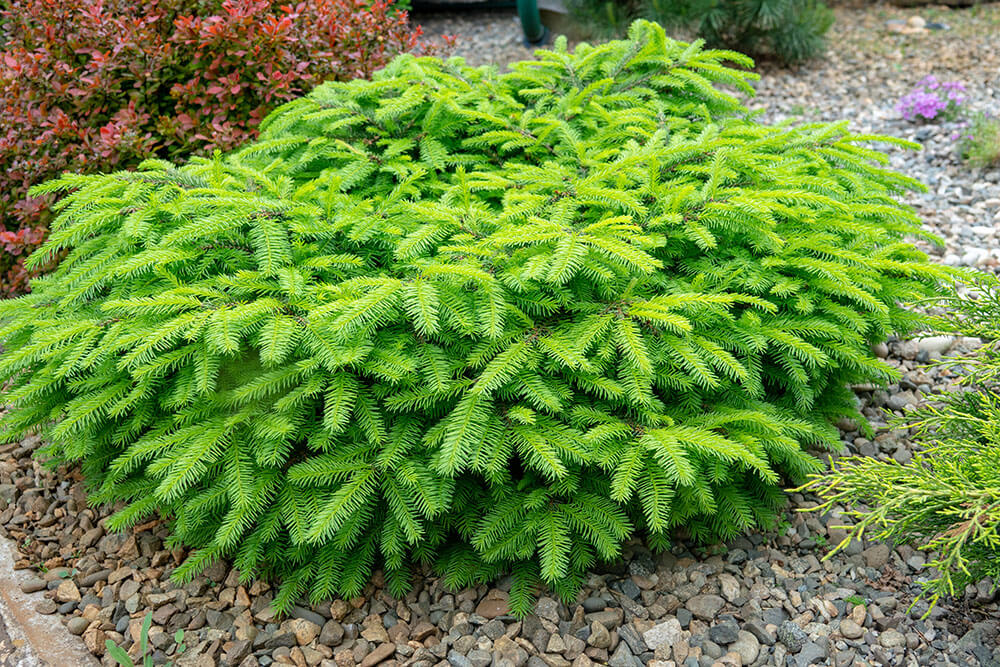
A delightful cultivar of Norway Spruce, Birds’ Nest Norway Spruce is a compact, dwarf variety that has a squat form with an indentation on top giving the impression of a bird’s nest. It is a small evergreen that gives wonderful winter interest and structure in the garden all year long. Slow growing, Birds’ Nest Norway Spruce are usually 2 to 4 feet, but in perfect conditions can get to 8 feet across, but this might take 30 years. Hardy in USDA zones 2 to 8, Birds’ Nest Norway Spruce have short ½ inch needles with soft pendulous new growth in spring.
3. Weeping Norway Spruce (Picea abies pendula)

If you have seen one of these in the landscape, you are likely to remember! Yet another cultivar of Norway Spruce, this weeping specimen will grow as a groundcover, slowly making its way over rocks and garden features in a memorable way. It will grow on supports as well, reaching 15 feet in height. As the species, Weeping Norway Spruce needs well-draining soils and full sun for its lovely deep green fragrant needles. A stunning choice as a specimen, it grows in USDA hardiness zones 3 to 7. You will love the unique cascading outward sweeping branches.
4. Colorado Blue Spruce (Picea pungens)
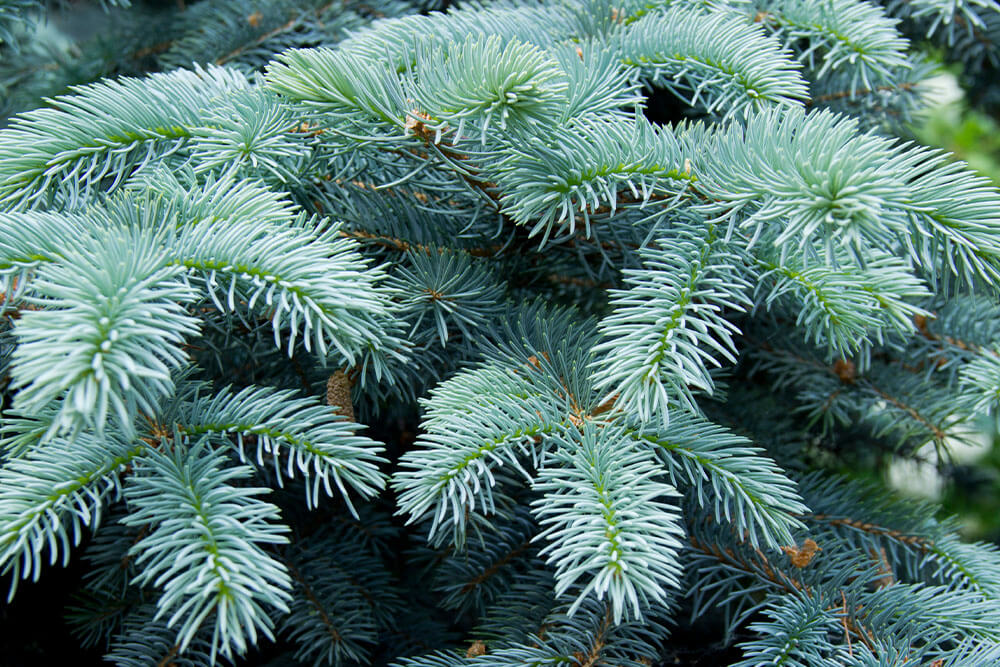
Loved for its dramatic evergreen blue-green needles, Colorado Blue Spruce makes a wonderful landscape tree. It is also fantastic planted in stunning rows for privacy and to use as a windbreak. An extremely popular ornamental conifer, Colorado Blue Spruce grows 30 to 60 feet tall. It not only thrives in full sun and requires well-draining soil, but it is also drought tolerant once established. Like many types of spruce trees, it is very attractive to wildlife and birds such as nuthatches, crossbills, and siskins. The dense, pyramidal shape is gorgeous all year long, and especially in winter after the flowers and leaves from other plants are gone. Hardy in USDA zones 2 to 7, Colorado Blue Spruce is a magnificent tree.
5. Colorado Blue Spruce ‘Globe’ (Picea pungens ‘Glauca Globosa’)
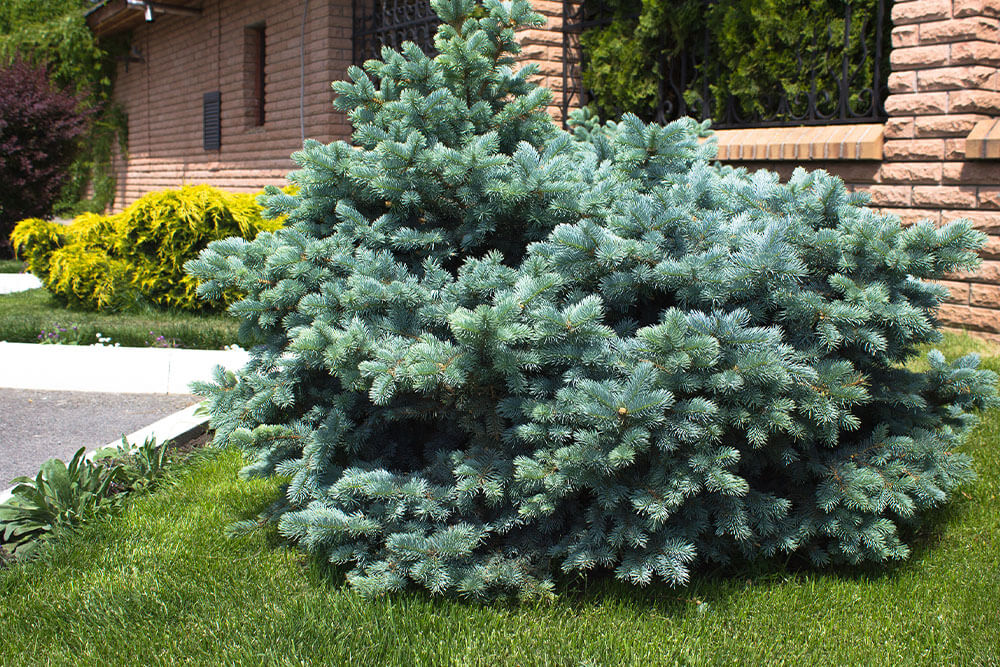
If you love the look of Colorado Blue Spruce but don’t have the space, the dwarf variety, Colorado Blue Spruce ‘Globe’ might be perfect for you. Growing in a rounded mound shape, Colorado Blue Spruce ‘Globe’ is slow growing, reaching 3 to 5 feet tall and 5 to 6 feet wide at maturity. A unique accent plant, the blue needles and dense branching habit make this small tree or shrub a wonderful partner in the landscape. The serene blue contrasts beautifully with other trees, shrubs, and flowers in all colors but is especially lovely with pinks, oranges, and purples.
6. Dwarf Alberta Spruce (Picea glauca ‘Conica’)

A naturally occurring variation of White Spruce, Dwarf Alberta Spruce was discovered in Alberta, Canada, in 1904 and has become one the most widely cultivated cultivars of spruce trees. Soft bright-green needles are tightly packed on this dwarf, conical small tree. It grows just 10 to 13 feet tall, perfect for small landscapes. It handles pruning well and is often seen in spiral topiary gracing entryways in USDA hardiness zones 3 to 6. It loves full sun, but it is worth protecting from areas that are too hot such as in full sun exposure close to a wall or house. It also likes wind protection.
7. Black Spruce (Picea mariana)
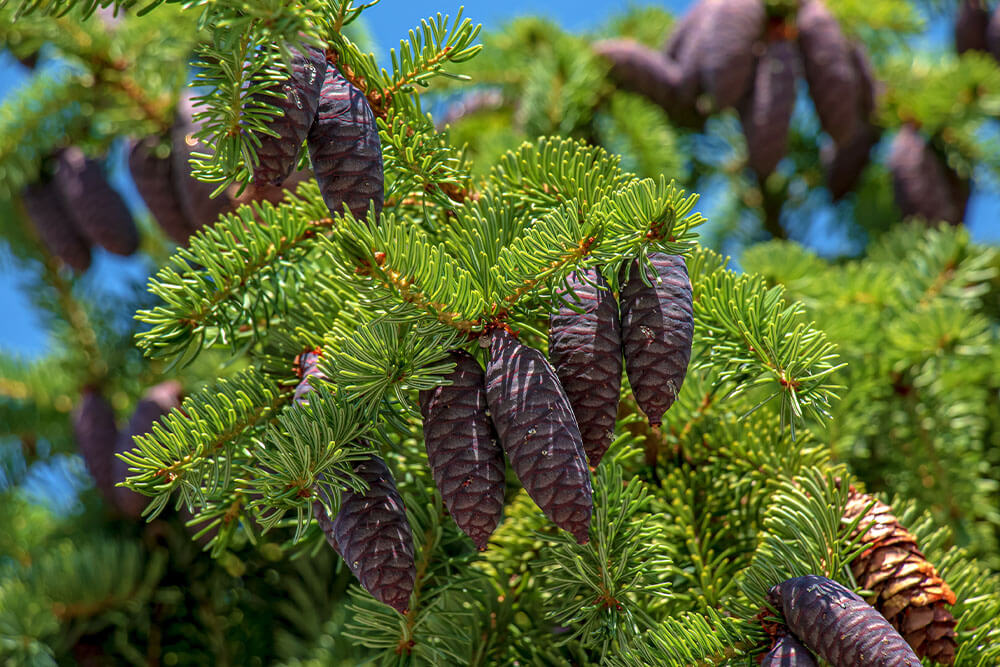
Also known as Bog Spruce or Swamp Spruce, Black Spruce is the type of Spruce Tree suitable for wet areas. It is native to the boreal forest of Northern North America. A large forest tree that is not generally used ornamentally, it grows 30 to 50 feet tall in USDA hardiness zones 3 to 7. However, there are several cultivars with wonderful landscape uses. ‘Beissneri’ is a dwarf shrub that is 6 feet tall and wide. ‘Fastigiata’ is sought after for its blue-grey foliage and columnar shape. And ‘Nana’ is a favorite broad dwarf shrub that grows 2 feet tall and 3 feet wide which prefers partial shade.
8. Engelmann’s Spruce (Picea engelmannii)
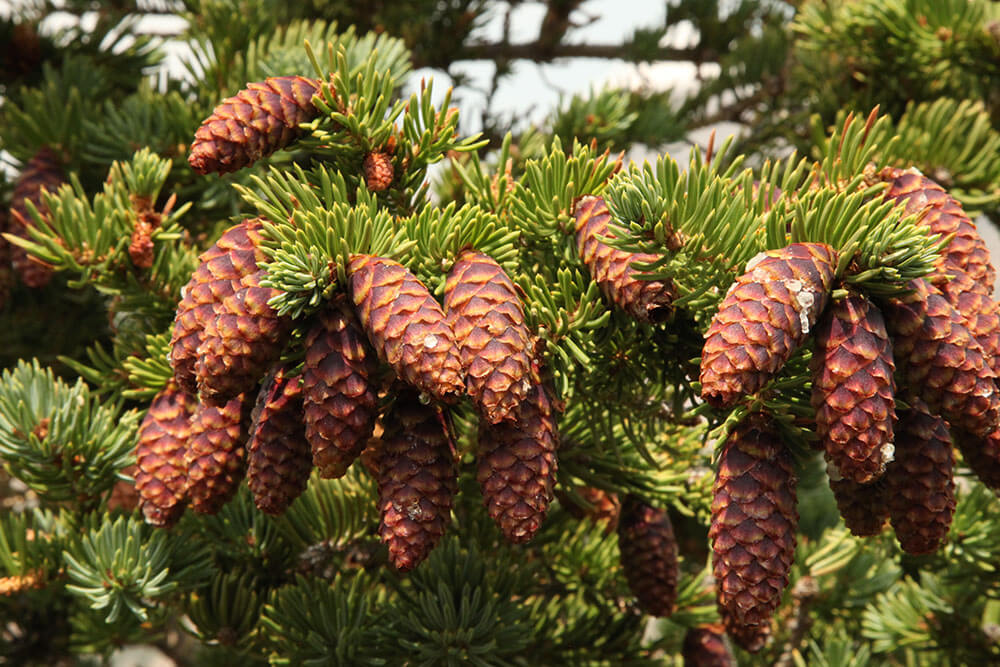
Native to Western North America, Engelmann’s Spruce is an excellent choice for landscaping at higher elevations, especially in a naturalized setting. Hardy in USDA zones 2 to 5, Engelmann’s Spruce can reach 70 to 100 feet and have exceptional longevity of hundreds of years. Cultivars of Engelmann’s Spruce are a perfect option for cold wet environments. Some include ‘Missy’ just 1 foot by 1 foot, ‘Bushs Lace’ that has a weeping form and grows 6 feet tall and 4 feet wide, and ‘Compacta’ that has a dwarf upright conical shape.
9. Oriental Spruce ‘Aureospicata’ (Picea orientalis ‘Aureospicata’)
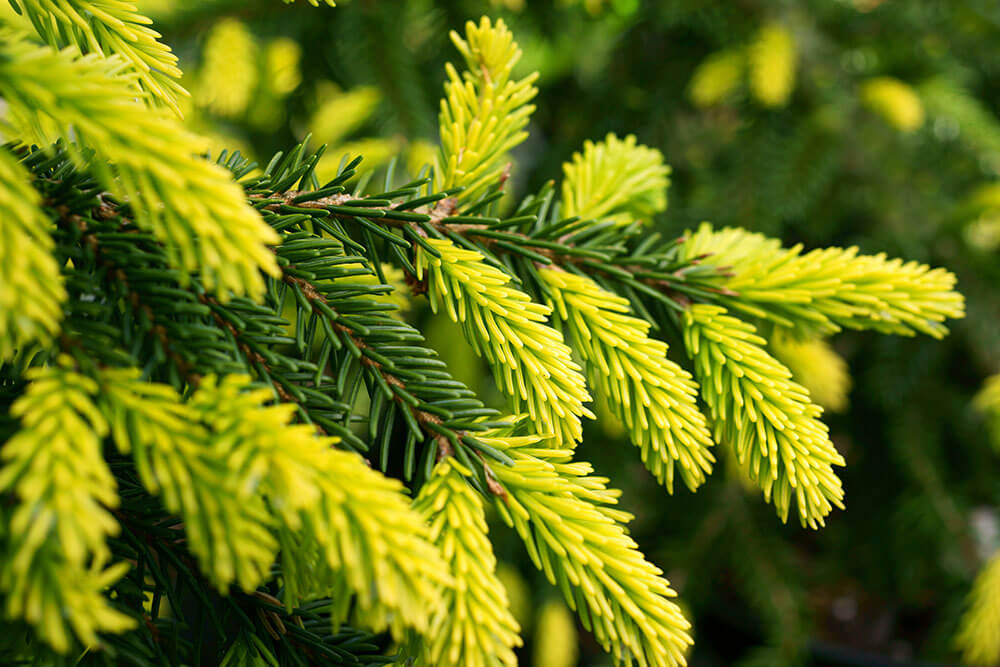
We love evergreens for their year-round form and function in the garden. Many types of spruce trees offer year-round structure in the garden, winter interest when our garden’s flower power is on hiatus, and beautiful cones that are often large or emerge in bright colors. But Oriental Spruce ‘Aureospicata’, a cultivar of Oriental Spruce is a springtime showstopper. Vibrant new growth in luxuriant golden yellow graces every branch tip in spring which contrasts gorgeously with the mature deep green needles. A relatively fast-growing Spruce Tree, Oriental Spruce ‘Aureospicata’ puts on 12 to 15 inches of growth each year reaching a mature size of 25 feet tall and 15 feet wide in USDA hardiness zones 4 to 7.
10. Serbian Spruce (Picea omorika)
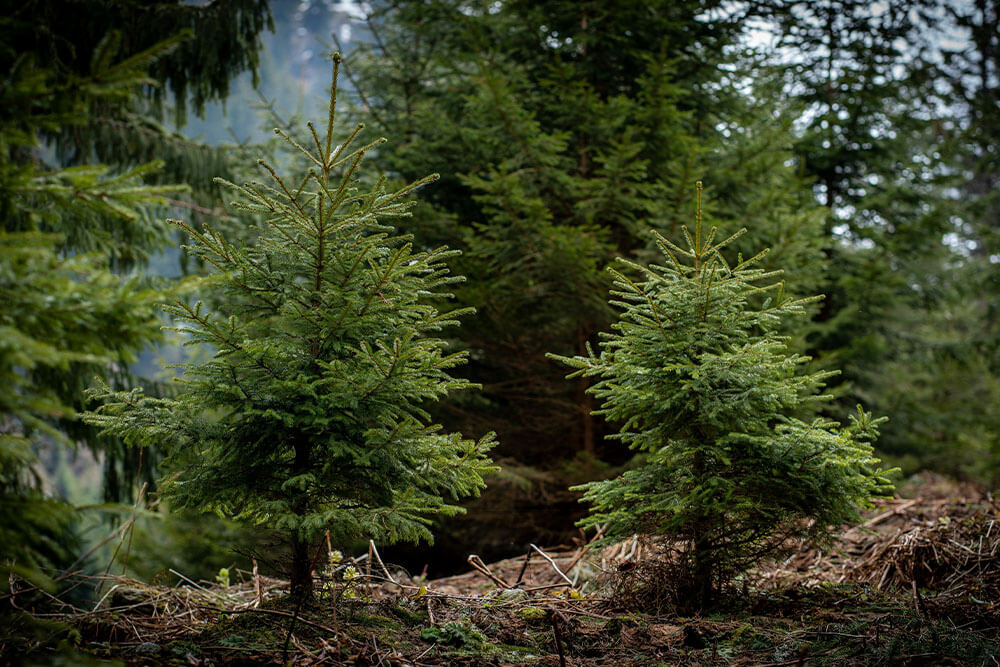
A large 50-to-60-foot tree, Serbian Spruce is a great choice for city conditions because it handles air pollution, hot humid conditions and can tolerate some shade and drought. Originally discovered in Serbia in 1875, there are a few ornamental cultivars available through the nursery trade. A dwarf form, ‘Pimoko’ is dense and round. ‘Bruns’ is a very narrow, 14-foot-tall tree with light green/blue needles. There is also a Weeping Serbian Spruce, Picea omorika ‘Pendula’ as well as an extremely narrow weeping form, Picea omorika ‘Pendula Bruns’, a cross between the ‘Pendula’ and ‘Bruns’ cultivars. Generally hardy in USDA zones 4 to 7.
11. Serbian Spruce ‘Karel’ (Picea omorika ‘Karel’)
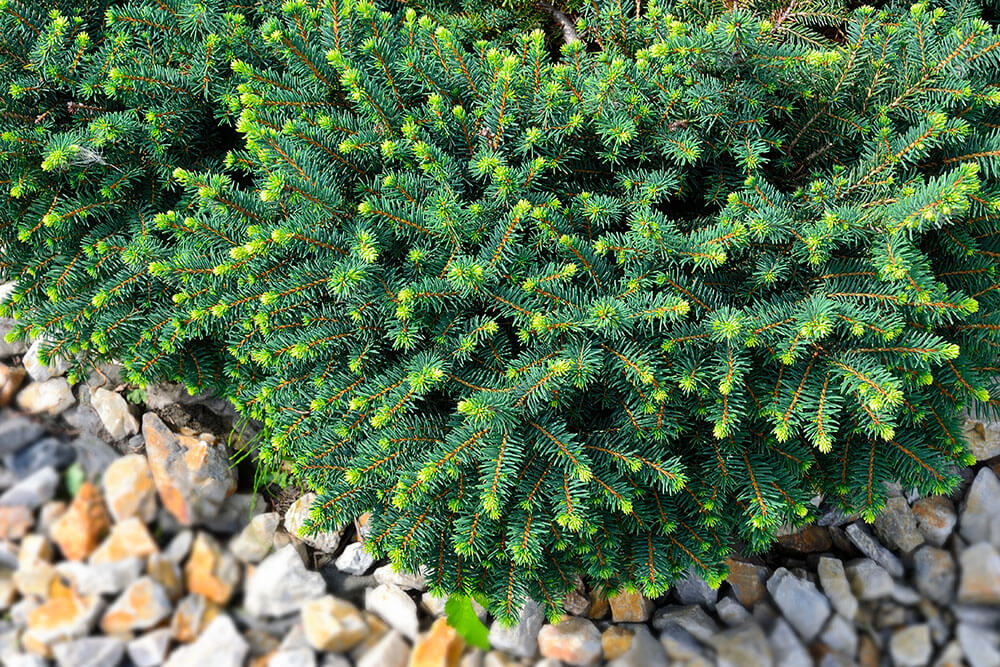
If you love the look of Bird’s Nest Spruce, here is a fine companion. This dwarf Serbian Spruce ‘Karel’ forms a natural cushion. Where Bird’s Nest Spruce is a light green, ‘Karel’ has very dark green needles. The pair create a lovely contrast in the evergreen garden, providing winter interest and year-round garden structure. Since ‘Karel’ is a cultivar of Serbian Spruce it may tolerate urban and suburban areas better than Bird’s Nest Spruce, so could be a great alternative if needed. Serbian Spruce ‘Karel’ grows 2 to 3 feet tall and wide. Hardy in USDA zones 4 to 7, ‘Karel’ is pollution and drought tolerant making it an ideal evergreen for small gardens and rockeries.
12. Sitka Spruce (Picea sitchensis)
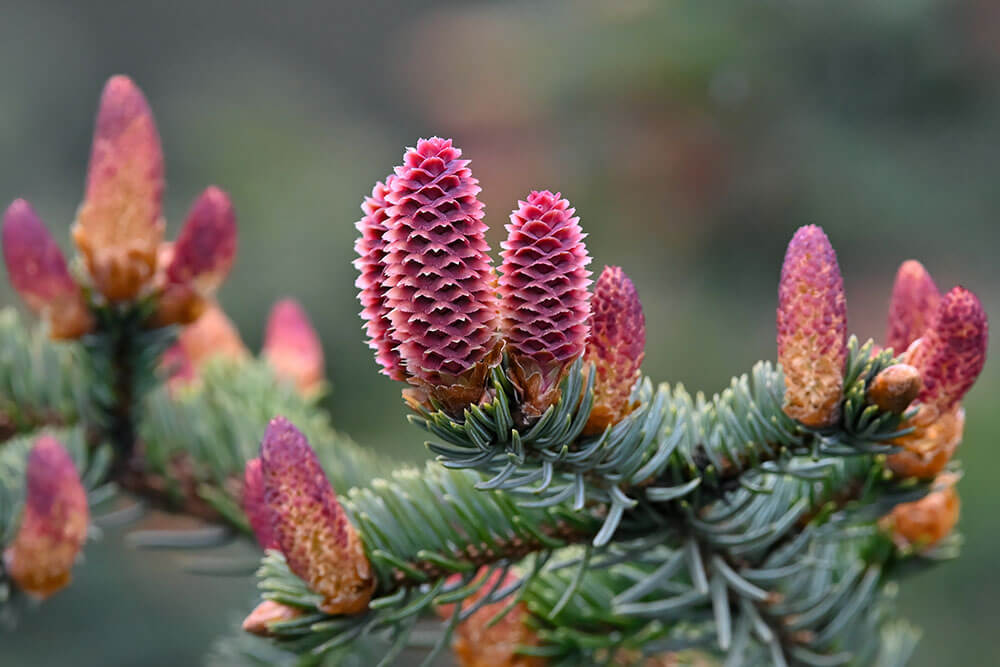
Found in the coastal fog belt in the Pacific Northwest, Sitka Spruce grows along the Pacific Ocean from California to Alaska. Reaching amazing heights of over 300 feet in the wild, Sitka Spruce is the tallest of the types of spruce trees. It survives temperatures as low as -33° F but is rated as hardy in USDA zones 6 to 8. The state tree of Alaska, Sitka Spruce grows best with moist to wet, sandy soil and cool, moist air. This is an incredible tree to grow if you can mimic the Pacific coastal environment where Sitka Spruce thrives.
13. Chihuahua Spruce (Picea chihuahuana)
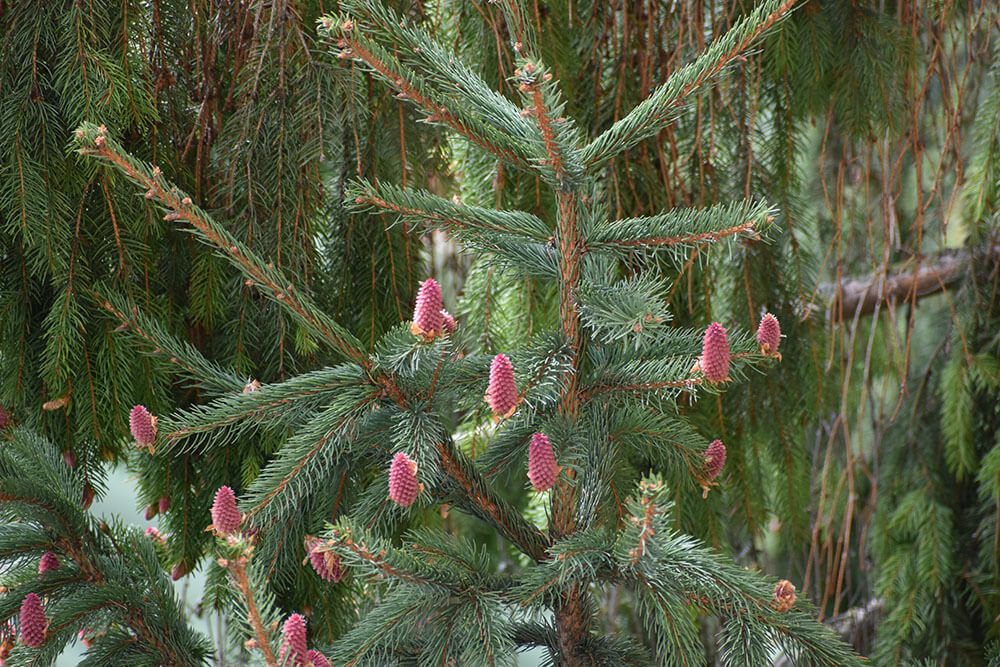
For collectors and those wonderful folks who love to grow rare and endangered tree species, this is one to consider. Chihuahua Spruce is native to northwest Mexico into the Sierra Madre Occidental Mountains. Endangered in the wild, it is found at elevations of 7500 to 10,000 feet, growing along streams and in valleys. Similar to Colorado Blue Spruce, these trees have attractive blue-green needles. The bark is thin and scaly and small circular plates flake off giving more interest to this rare Spruce species. It is also the species most heat tolerant, growing in USDA zones 7 to 10. While small populations still exist, this 40-foot-tall Spruce is a wonderful addition to a rare or endangered tree collection.
14. Brewer’s Spruce (Picea breweriana)

Brewer’s Spruce is a North American native tree with a weeping form that gives this rare tree a natural grace in the landscape. Its native range is from northern California to southern Oregon allowing it to grow in USDA hardiness zones 6 to 8. Loving full sun, Brewer’s Spruce grows 30 to 50 feet tall with long cascading middle and lower branches that dangle below an open crown. Cones are purple to red when young, maturing to 3- to 6-inch-long reddish-brown pendulous cones. Brewer’s Spruce grows best in dry, warm summers where winters are cool and wet.
14 Towering Types Of Spruce Trees That Come In All Shapes And Sizes
With their natural Christmas-tree shape and lovely dense, symmetrical tiers of branches, there are countless types of spruce trees to choose from. Many types grow in interesting shapes such as dwarf, weeping, and globe forms. To make them even more interesting in the landscape, some spruce trees have white, blue, yellow, or green needles. We hope this has helped you find gorgeous types of spruce trees perfect for planting in your garden.

